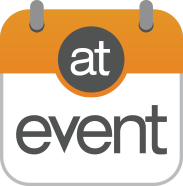
If your end goal for your event is to drive more qualified leads to sales—and it should be—then account-based marketing (ABM) is the way to go.
ABM involves team alignment on what accounts to target and draws on data from digital and in-person interactions to create experiences that resonate with the different personas that make up the buying groups within those accounts.
“A best-in-class event strategy looks and feels to the recipients like something that is tuned to them, their company and their priorities/needs,” says Alisa Groocock, research director at SiriusDecisions.We asked Groocock what tangible steps marketers can take to create a best-in-class event. Read on to learn how to tune pre-, at- and post-event activities to maximize engagement with the accounts that matter most to your business.
1. Choose the Right Events
From an account-based marketing perspective, the right events are the events that will put you in front of as many individuals from your target accounts as possible. Before planning your event calendar, consider these questions:
- Which large events do our most important buyers already tend to go to? For example, in the healthcare industry, this is HIMSS. If you’re in security, it’s RSA.
- What smaller, regional events might some of our important buyers go to?
- What events might we put in motion that would attract our buyers to attend? Could a regional roadshow give us access to buyers who might not travel to a more distant event?
“Sketch out a set of events that make sense in combination (spread out beyond just one event, since that’s risky),” suggests Groocock, adding that companies should “roll those events together with the rest of the integrated marketing plan, and start to look at event ROI as part of a broader multi-channel strategy.”
2. Drive the Traffic You Want Most
Don’t leave connecting with target accounts up to chance. Use these tips to tune every aspect of your pre-event strategy to drive the traffic you want most to your event.
- Create account- and persona-specific messaging. Capture the attention of your ideal customers with messaging that speaks directly to their hot button issues.
- Reach out to accounts in their preferred manner. Focus on delivering your message in the channel(s) most used by your ideal customers. Facebook ads might get you a lot of impressions, but if your ideal customer’s preferred channel is LinkedIn, that’s where you should concentrate your efforts. Consider new methods such as geotargeting and hyperpersonalization to push custom ads to specific audiences.
- Combine custom emails from sales with broader outreach. If your sales team has insight into which key buying group members go to an event, tap into that. “But don’t rely on the sales team exclusively to drive attendance,” Groocock advises. “Develop a multi-pronged strategy to cast a wide net.”
- Use web personalization. Not just for events! Web personalization allows you to serve up account- and persona-based messaging on your website so your top accounts get the same message whether you’re pushing to them, or they’re visiting you. If you’re already using this technique on your home page, make sure to apply it to any landing pages you create for your event, as well.
3. Create a Tailored On-site Experience
Most companies take a one-size-fits-all approach to the event experience that provides generalized product or solution information to the broadest audience. Here are some ways to tune that experience for the accounts and individuals you care about most.
- Prepare booth staff for conversations with target accounts. Provide a dossier on the 10-15 accounts that you most care about, with a clear playbook for what to say and do if individuals from those events come to the booth.
- Create targeted collateral. Info sheets for key products and solutions are always a good bet, but consider adding something specifically designed to appeal to your top accounts. This could be account- or persona-based use cases, a list of upcoming activities those personas might be interested in, or something else. If it’s your event, impress prospects from target accounts with customized agendas built around their interests and initiatives.
- Create opportunities for planned interactions. Take advantage of executives’ love of networking by putting together an event with the event, such as a “birds of a feather” session with 10-12 accounts that you know share common interests or an intimate executive dinner tailored to 10-12 key accounts.
4. Drive Future Engagement & Accelerate the Pipeline
Events not only provide opportunities for interactions with target accounts, but are treasure troves of data to fuel your ABM strategy. Follow these tips to accelerate opportunities and deepen engagement with target accounts.
- Share account, buying group and individual-level event data with Sales. Help your sales team follow up effectively and gain a better understanding of the buying group by quickly passing on data from event interactions, including notes and qualifiers from the conversation, and who else from the buying group interacted with your company at the event.
- Review and refresh target account data. Update your account dossiers, demand unit mapping, and personas based on information captured at the event.
- Optimize your event strategy for ABM. Review target account attendance, engagement and other data to evaluate pre-event marketing and measure event performance.
How can you tell if your efforts were successful? According to Groocock, good metrics include general attendee levels, percentage of target accounts that have at least one attendee, and engagement within target accounts, such as whether key buyers from target accounts attending a dinner, number of conversations at the booth with key accounts, etc. “Readers should expect to see some of these “front end” activity metrics rise above normal levels,” Groocock explains. “If opportunities are generated that’s a bonus–but it’s not realistic to expect a critical mass of new qualified opportunities (which should include the full buying group) to come out of one event. Pipeline is generally going to be the result of events as one part of a broader strategy.”









